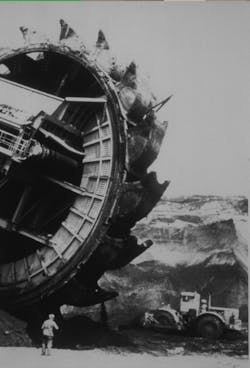Technology is neither good nor bad ... it just is
The Luddites, those Nottingham workers that smashed new machines during the Industrial Revolution, certainly didn't think so.
Neither did the Saboteurs in France, so called for their habit of throwing sabots (French for “wooden shoe”) into the new power looms putting droves of skilled knitters out of work.
Nor did, for that matter, the strikers stateside that brought industrialization here to a screeching halt in 1877, or the numerous local communities that actually condoned and supported these destructive activities.
Judging from current Vietnamese and Latin American labor strikes, workers there don't buy into all the promises of industrialization either. It begs the question: Why does automated machinery with all its benefits threaten so many people?
Sadly, the use of technology for private gain doesn't automatically make for universal progress and modernity. Industrialization certainly improves living standards over time, but it also ropes independent artisans into more rigid wage labor, and disenfranchises others altogether: the immigrants maimed in Upton Sinclair's jungles and child coal miners are two examples. So are the machinists who were recruited to fix flaws in early CNC machines, in effect, making themselves obsolete, a tragedy explained by David Noble in his Forces of Production.
Thousand-fold increases in grain yields, vastly improved housing construction, lightening-fast communications; yes, modernity's triumphs are breathtaking, even though they tend to benefit the Bill-Gates types more than you and me. Acceptance of this inequality, I think, is best explained by a tendency described by game theory's Richard Thaler, who proved individuals are more likely to accept an uneven split of a prize if the total prize is very large. The benefits of engineered technology are large indeed, and have made most human endeavors staggeringly productive, and this, in turn, has given most of us a satisfactory share.
Still, even American workers are now threatened by computer-driven robotics and automated customer-service lines. In fact, with last year's DARPA race successfully completed by several prototypes, robots could eventually replace even drivers and forklift operators. It makes you wonder: Because trade requires real workers who can afford goods manufactured, where do real humans fit into an increasingly automated economy? And will the answers be left to chance?
I think we need to come up with better answers than those served up 150 years ago, in the days of robber barons and unscrupulous financiers. As Henry Ford once wrote, “A machine does not belong to the man who buys it or to the man who operates it, but to the public — and it advantages the worker and the proprietor only as they use it to the advantage of the public.” Technology can be used to concentrate wealth, tighten control, and strengthen privilege, and that certainly “benefits” some. However, real benefit is something that improves the lives of all, and it is easily within reach.
Want more? Here are our thoughts on China and how the U.S. should use pragmatic approaches to deal with the issue.
About the Author
Elisabeth Eitel
Elisabeth Eitel was a Senior Editor at Machine Design magazine until 2014. She has a B.S. in Mechanical Engineering from Fenn College at Cleveland State University.
